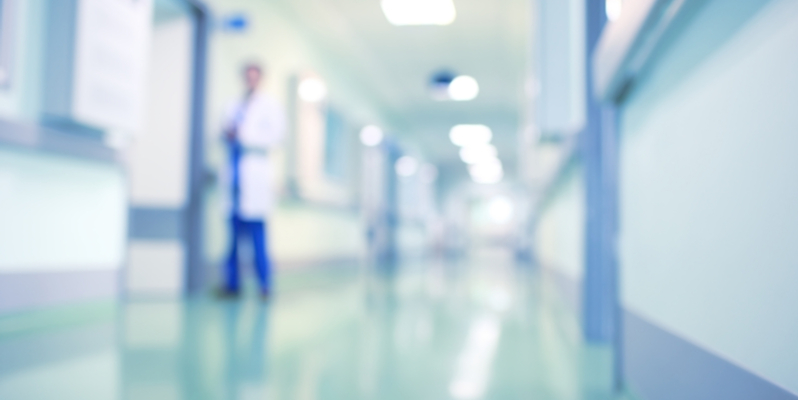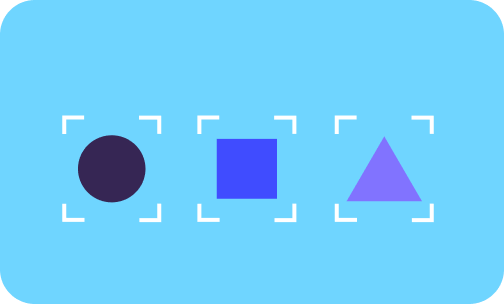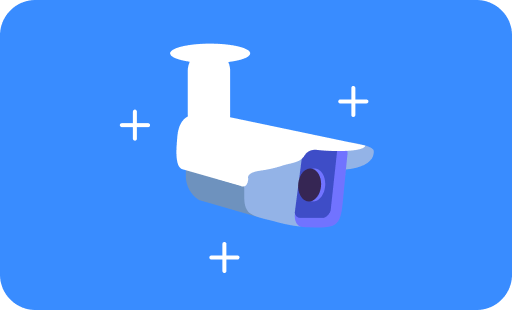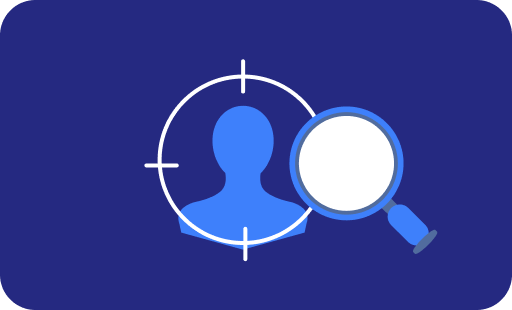Video analytics for healthcare: protecting hospital premises
- Security for businesses

In our last article about the healthcare sector, we looked at how video monitoring and intelligent video analytics can improve health and safety for patients and staff. In this article, we’re going to investigate how video surveillance, enhanced with artificial intelligence, can help to protect healthcare sites, such as hospitals, care homes and hospices.
Site security is vital for the healthcare sector; without the assurance of a secure environment, staff cannot do their jobs and the safety of their patients is under threat. As in many other sectors, healthcare providers are starting to appreciate the potential of video surveillance and AI to help keep premises safe from intruders, prevent theft, and much more.
Often healthcare providers must also divide their budget across many competing areas which all require investment - for example, upgrading equipment and wards to provide better care. This can mean that site security is not always at the top of the agenda for investment.
With intelligent video analytics like Calipsa, healthcare providers can do more, with less; they are a cost-effective and flexible addition to existing video surveillance systems. Integrating video analytics into your legacy CCTV system can transform older cameras into much more proactive intelligence tools, which enhances site security and extends your cameras’ lifespan.
So how can you use an AI-enhanced video surveillance system to improve hospital security and safety? We look at some of the ways below.
Ward monitoring and occupancy checks
Intelligent video analytics can be instructed to observe or ignore chosen features on camera. If you want a rapid update on the number of occupied beds in different wards of your hospital or care home, video analytics can assess this for you. Object counting can also send through alerts if the number of empty beds is starting to decrease to a point that might become problematic - say in the A&E / ER department where new cases are coming in constantly.
Analytics can also reveal any unoccupied equipment that could cause obstructions and delays - for example, empty wheelchairs, beds or trolleys left in corridors. As well as identifying that the object is not occupied by a patient, video analytics can also assess how long the item has been left in situ. If it exceeds a certain threshold, an alert can be sent to a member of staff to move the object out of the way, which reduces health and safety risks.
Empty beds and/or wheelchairs can also reveal if a patient has wandered off - find out more about how analytics can help with patient safety in this article.
Want to learn more about how Calipsa's intelligent video analytics can enhance healthcare safety and security?
Perimeter security
Perimeter security is important for any site - and that includes hospitals and care homes. Healthcare providers have a duty of care to their patients, and part of that agreement is to provide a secure environment in which treatment and recovery can take place. For example, many care homes have access control points throughout the building, to avoid vulnerable elderly patients from wandering out, but also to prevent unauthorised visitors and staff from coming in.
Hospitals often cover vast sites - sometimes they can be a complex of different buildings. Video surveillance can help staff working in hospitals and care homes to assess what is going on around the building and in the car park. Intelligent analytics can help staff to spot suspicious activity; features such as loitering detection can trigger an alert if someone appears to be hanging around an area for long periods of time.
Perimeter security, such as access control points and video surveillance, are also vital to keep medical staff safe in their line of work. Emergency rooms (or accident and emergency rooms) are busy and stressful places. Often it takes time to be seen, and doctors and nurses are under enormous pressure to ensure that they quickly and accurately diagnose what is wrong with the patient. The severity of the injury is also a deciding factor in how soon patients are attended to. In such a pressurised environment, this can make some members of the public aggressive, abusive and even violent towards hospital staff.
In nursing homes, care workers are also exposed to patient aggression, particularly from people suffering from dementia or Alzheimer’s. Whatever the situation, it is crucial that staff can feel safe and secure in their place of work. In these situations, having video analytics that can proactively alert other members of staff to a harmful or violent situation is an incredibly useful tool. Crowd forming and motion detection can be used to determine if people are behaving in a way that looks unusual - and could therefore constitute a threatening situation.
Access control and theft prevention
Video surveillance can also help hospitals to monitor areas with restricted access. This is useful to keep members of the public out of areas where doctors are working, and it also helps to protect the hospital’s assets: wheelchairs, crutches, medical equipment and medication are all expensive for a hospital to replace if stolen.
Hospital pharmacies can be vulnerable to theft - in these cases, not only can analytics determine if someone is loitering in the vicinity, they can also count the number of people permitted inside the pharmacy at any given time. For example, if a maximum of 2 people should be in the pharmacy, analytics can trigger an alert if another person enters. If there are periods when it is closed (e.g. lunchtime) then analytics can trigger an alert if anyone enters the pharmacy at all.
Similarly, hospital laboratories have restricted access so that tests can take place in an uncontaminated and safe environment. They also contain a lot of very valuable equipment and substances that medical professionals use to carry out tests. As with the pharmacy example above, video analytics can assess if people are loitering around the lab, and whether the appropriate number of people has been exceeded at any given time.
Discover how intelligent video analytics and event-based monitoring could transform safety and security for healthcare providers. Download Calipsa's free whitepaper to learn more:









No comments